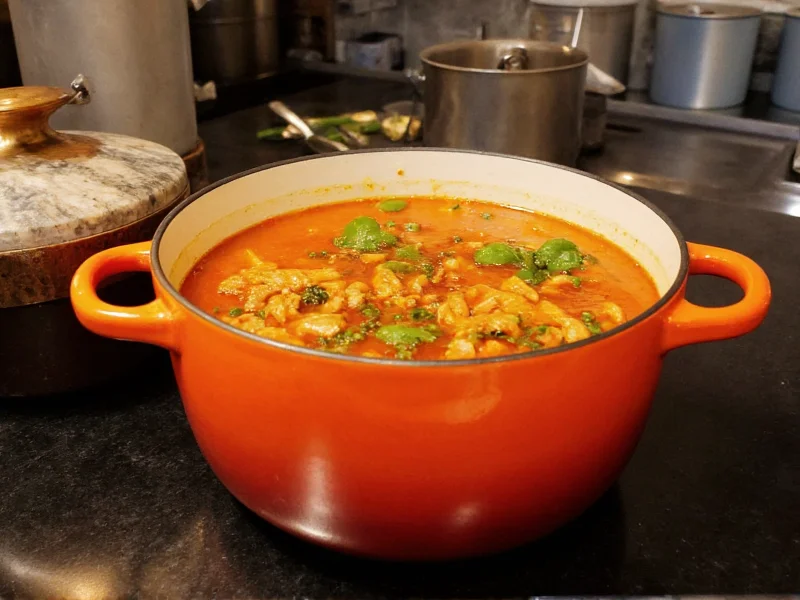When selecting a large soup pot for your kitchen, understanding capacity requirements and material properties is essential. Professional chefs and home cooks alike rely on these workhorses for preparing stocks, soups, stews, and canning operations that smaller pots simply can't accommodate. The right large soup pot becomes indispensable for meal prepping, holiday cooking, and preserving seasonal harvests.
Defining Large Soup Pot Capacity
The term "large" in kitchenware refers to pots with 8 quarts or greater capacity. While standard soup pots range from 4-6 quarts, true large soup pots start at 8 quarts and extend to 20+ quarts for commercial applications. For most home kitchens, an 8-12 quart soup pot handles everyday batch cooking needs, while serious canners and entertainers often require 16-20 quart models.
Consider your typical cooking volume when determining the appropriate size. A practical guideline: if you regularly cook for six or more people, or preserve food through canning, a large soup pot of 12 quarts or more becomes necessary. Smaller households might find an 8-quart model sufficient for occasional large-batch cooking.
Material Comparison for Large Soup Pots
The construction material significantly impacts performance, especially with large soup pots where heat distribution challenges increase with size. Below is a comparison of common materials used in quality large soup pots:
| Material Type | Heat Distribution | Durability | Best For | Considerations |
|---|---|---|---|---|
| Tri-ply Stainless Steel | Excellent (aluminum core) | Very High | Everyday stock making, acidic ingredients | Heavier weight, higher cost |
| Enameled Cast Iron | Superior (retains heat) | High (if enamel intact) | Slow simmering, big batch stews | Very heavy, requires careful handling |
| Aluminum (anodized) | Good | Moderate | Budget-conscious cooks | May react with acidic foods, less durable |
| Copper (stainless lined) | Exceptional | Moderate | Professional applications | Very expensive, requires maintenance |
Essential Features for Large Soup Pots
When evaluating large soup pots for canning or commercial kitchen use, prioritize these critical features:
- Reinforced handles - Large pots become extremely heavy when full; look for riveted, stay-cool handles that can support the weight safely
- Thick base construction - At least 3-ply construction prevents warping on electric stovetops and ensures even heating
- Measurement markings - Interior volume indicators help with recipe scaling and canning requirements
- Lid fit - A tight-fitting lid maintains temperature and reduces evaporation during long cooking sessions
- Stove compatibility - Ensure the pot works with your specific cooktop (induction requires magnetic base)
Practical Applications for Large Soup Pots
Understanding when you genuinely need a large soup pot prevents unnecessary kitchen clutter. These vessels excel at specific tasks that smaller pots cannot handle efficiently:
Stock and broth production requires extended simmering times where evaporation becomes significant. A large soup pot with 12+ quarts capacity allows you to start with 10 quarts of liquid and still yield 6-8 quarts of finished stock after reduction. The wide surface area facilitates proper skimming of impurities during the clarification process.
Canning operations demand specialized large soup pots known as canning kettles. These typically feature 16-22 quart capacities with perforated inserts for processing jars. The extra height prevents boil-overs during pressure canning, while the substantial volume accommodates multiple jars with adequate water coverage.
Batch cooking for meal prep becomes dramatically more efficient with an 8-12 quart soup pot. Cooking 4-6 servings of soup simultaneously reduces energy consumption per serving and provides ready-made meals for the week. This approach particularly benefits those following dietary protocols requiring large quantities of bone broth or vegetable stocks.
Proper Care for Longevity
Maintaining a large soup pot requires specific techniques due to its size and weight. Never subject a hot pot to rapid temperature changes, as this can cause warping - allow it to cool gradually before washing. For stainless steel models, avoid abrasive cleaners that create scratches where food can adhere. Enameled cast iron requires gentle handling to prevent chipping the coating.
Storage presents unique challenges with large soup pots. Stack smaller pots inside when possible, but never force-fit nested cookware as this can damage rims. Consider vertical storage solutions with pot racks if cabinet space is limited. For extremely large canning pots (16+ quarts), dedicated floor storage may be necessary.
Common Mistakes to Avoid
Many home cooks make critical errors when using oversized cookware. Overfilling beyond the two-thirds capacity mark risks dangerous boil-overs, especially with starchy liquids like pasta water. Using insufficient heat under large pots creates uneven cooking and potential scorching at the bottom while the top remains cool.
Attempting to lift a fully loaded large soup pot creates serious safety hazards. Always use the handles properly with both hands, and consider having a second person assist with particularly heavy loads. Never carry a full large soup pot across the kitchen - move it incrementally while keeping it on the counter or stove.











 浙公网安备
33010002000092号
浙公网安备
33010002000092号 浙B2-20120091-4
浙B2-20120091-4